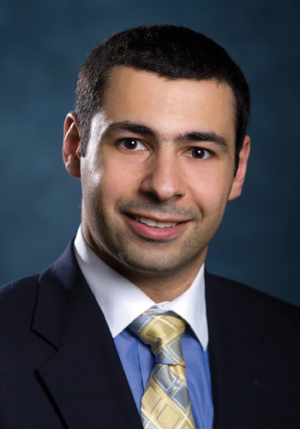Mina Dawood, assistant professor of civil and environmental engineering with the Cullen College of Engineering, recently received a three-year, $300,000 grant from National Science Foundation to develop a new method of repairing cracks in steel structures such as bridges.
Most repairs on cracked steel structures involve welding or bolting new steel components near the crack or manipulating the tip of a crack (the point where its two sides meet) to prevent it from growing. These approaches, though, are frequently ineffective.
“A lot of cracks initiate at welded details, so we often see reinitiation of cracking at repair locations. Our hope is that we can delay and even potentially halt the cracking,” Dawood said.
Dawood’s approach is to mix fiber-reinforced polymers with shape-memory alloys to form a patch that compresses the crack tip, like a bandage pulled tightly over a cut. In doing so, such patches would dramatically slow or even eliminate the propagation of the crack.
While the fiber-reinforced polymers will give the patches strength, this ‘pre-stressing’ effect will be achieved through the use of shape-memory alloys. These cutting-edge materials can be manipulated at the molecular level to take on a specific shape when, for example, they are heated to a certain temperature.
When used in real-world applications, Dawood said a patch would likely be designed and fabricated offsite and then taken to the repair location. A repair crew would then cover the crack with the patch, which would be held in place with a structural adhesive. When the adhesive bonding is complete, the patch would be heated with a localized heat source as simple as a hair dryer. That heating would cause the patch to contract, pulling the two sides of the crack closer together. As a result, the crack-opening stresses at the crack tip would be greatly reduced and the crack’s growth would be slowed or even halted.
In addition to being more reliable, this approach is also easier to implement than existing repair methods, noted Dawood. “One big advantage of these patches is constructability. You can imagine welding steel plates on the bottom of a bridge is not an easy task. It’s disruptive, it requires a lot of heavy machinery and it can’t be done quickly. These patches can be applied more quickly with less equipment and fewer workers.”
Dawood has two primary collaborators on this project: Kaspar Willam, a professor of civil and environmental engineering at the Cullen College, a member of the National Academy of Engineering, and an expert in computational mechanics; and Gangbing Song in the college’s mechanical engineering department, whose research interests include ‘smart’ materials such as shape-memory alloys.
